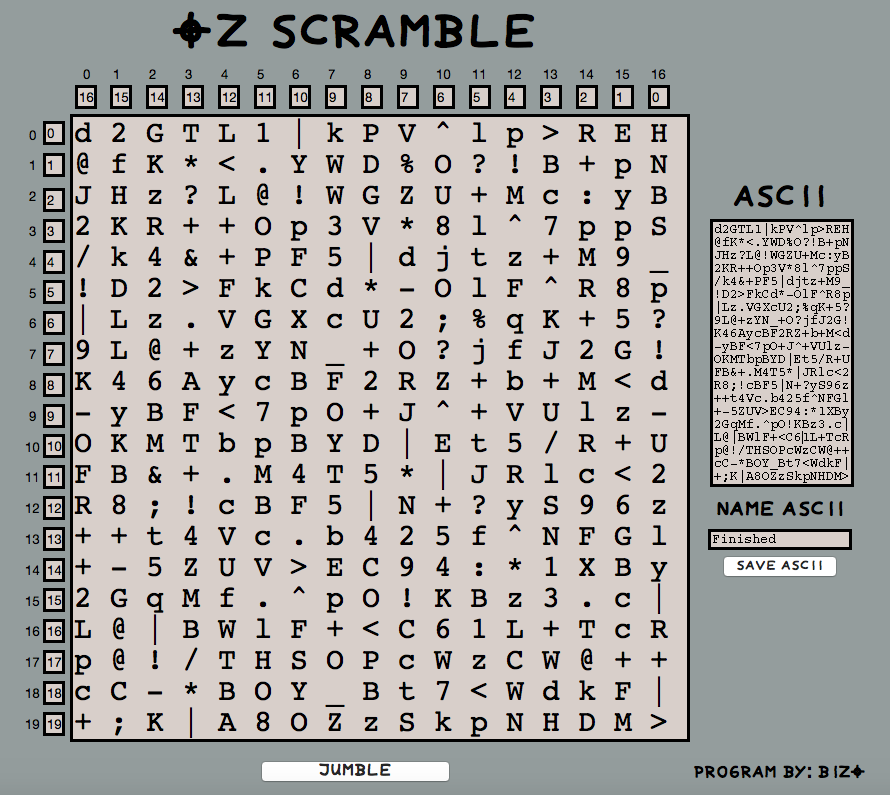I created a Python (2.7) based application to help rearrange the symbols in zodiac 340 cipher. The application allows you to move the columns and rows around and export the resulting text as a .txt file. You can then run the .txt file through zkdecrypto or whatever program you use. You have to have Python installed run the program. You also need to install the Z340 font created by Largo.
Let me know if you find any problems with it. I created it on mac. I have had problems in the past with python code when I ran it on windows. I am by no stretch of the imagination good at programing. ![]() Also, I changed some of the ascii symbols when putting them in the code. Let me know if you see any errors.
Also, I changed some of the ascii symbols when putting them in the code. Let me know if you see any errors.
This is the git for code: https://github.com/frontendben/Z-Scramble
Here is a screenshot of the program.
Awesome, will have to spend some time with this. Thank you for creating this.
Your dad is not the Zodiac.
I have been doing some more work on finding different ways to reorder the columns in the z340 to find an arrangement that contains a decipherable cipher. I have created a program that creates "n" random arrangements of the cipher and then shoves them through zkdecrypto-lite. The problems with this approach is there are 17! possible rearrangements of the columns. I am contemplating trying to create a markov chain monte carlo approach for exploring column rearrangements. Essentially the programs would randomly move a column, run the new cipher text through zk-lite. The program would rely on the resulting score. For example if the new arrangement had a better solve score than the old arrangement the program with accept the column moves and then during the next iteration move another columns. If the solve score was less the program could accept the rearrangement but whether it would accept the arrangement would be based on a probability (determined by the resulting solve score). This approach would reduce the number of "ciphers" the computer would have to look at to get a result. Has anyone given this method a shot?

